August 8,
2015
This morning
we did the steep climb up to the overlook on the Serra, a dome of granite rock
that rises above the rainforest. We were lucky to be there when a small fig was
in fruit right next to the overlook – several tanagers including
Opal-rumped and Bay-headed gave us extended views. The view of the forest below
is also stunnning, and we had a hard time tearing ourselves away from it.
The local
guides discovered this Common Potoo along the trail, apparently on a nest, as
it has been here for several days.
We finally
departed for the cooler rainforest trails when we began to see the first
soaring raptors, such as this Hook-billed Kite.
Before we
got back on the boats to return to the lodge, I decided to try to show my group
what a larval antlion looks like. Everyone knows the little sand pit traps they
make, but few have actually seen the creature. You have to scoop up all the
sand and let it sift between your fingers while looking for the one thing that
isn’t a grain of sand.
My daily
check of the wet sand by the boats was productive.
This tiny
wasp was guarding her small paper nest built atop a leaf on a small tree (a
Moluccan Roseapple) by the dorm. She kept turning to face the camera, ready to
sting at a moment’s notice, so I had to take a lot of photos and maneuver
slowly to get this profile. Only after I took the photo did I realize that eggs
and pupae were visible in open cells.
We took an
afternoon boat ride down the Cristalino River to the Manakin Trail, here the
group gathering in the shade before loading into the boat.
Bird
highlights on the short Manakin Trail were Bronzy Jacamar and Amazonian
Streaked-Antwren, and we then boarded our boat for our last return to the
lodge.
This evening
after dinner, there were only a few insects on the moth sheet a short ways down
the trail, lit by a weak fluorescent bulb.


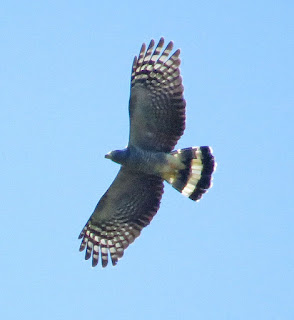



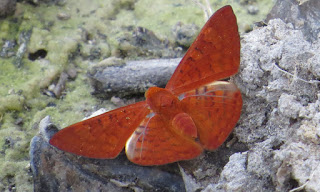
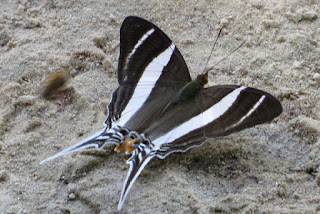
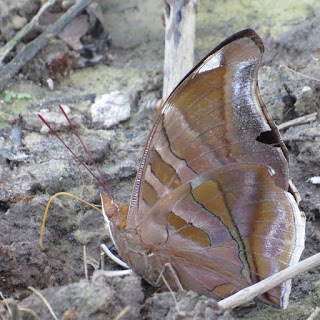




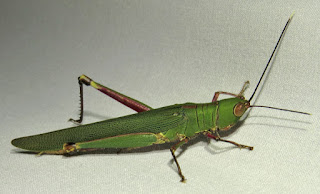







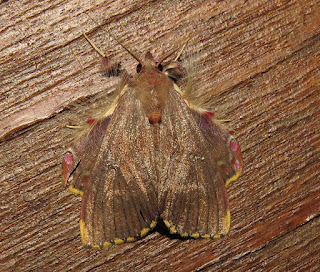


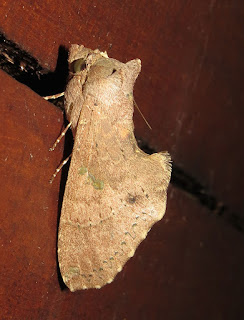














No comments:
Post a Comment